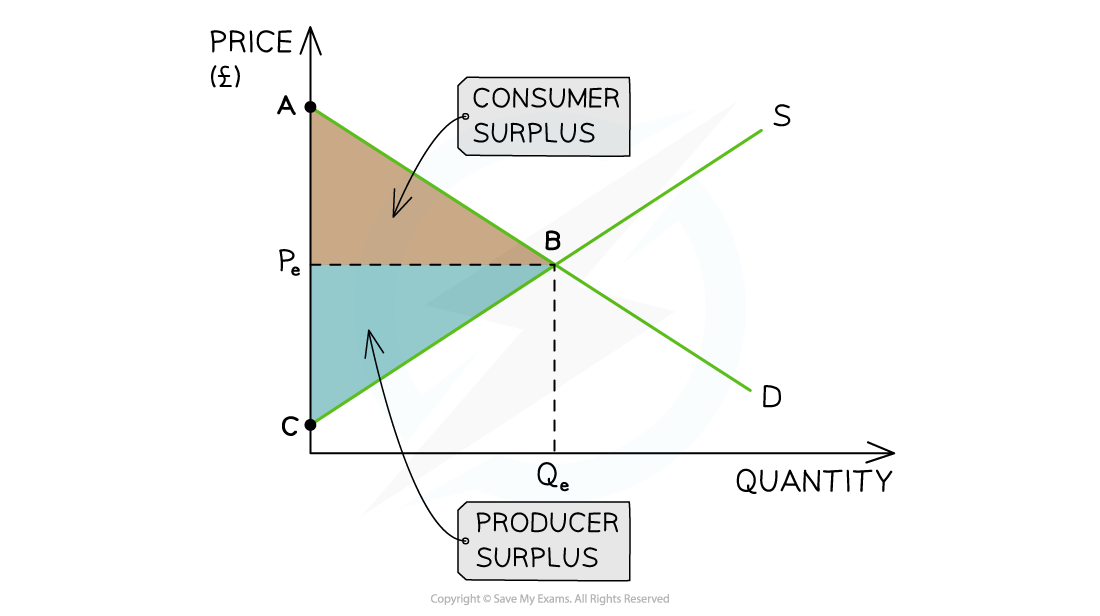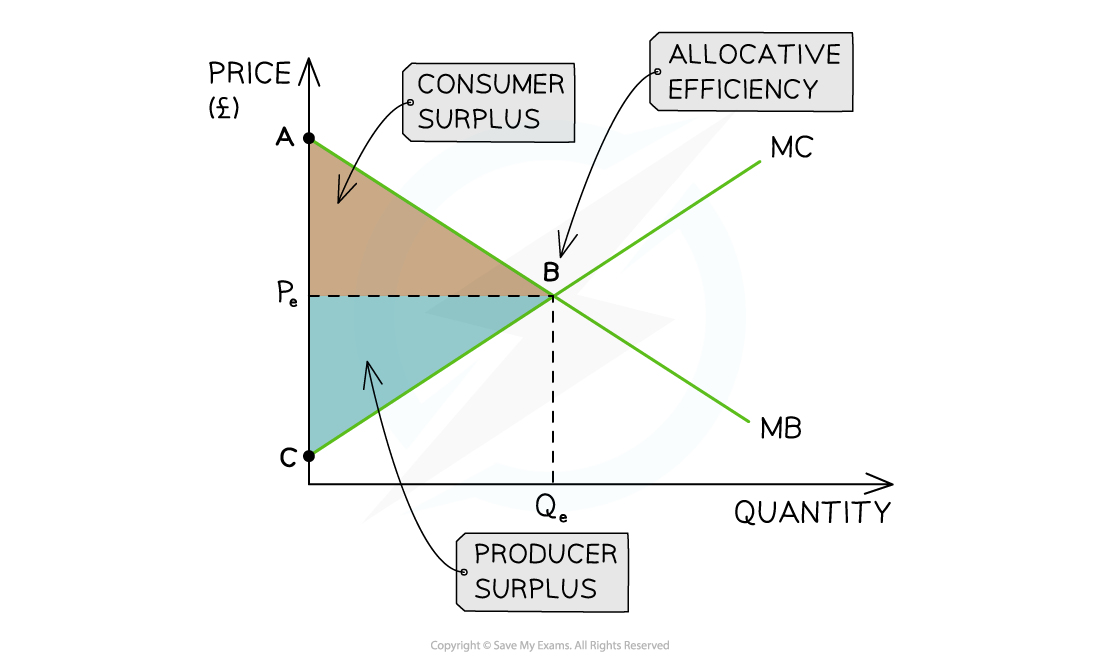Consumer & Producer Surplus
- Consumer surplus is the difference between the amount the consumer is willing to pay for a product and the price they have actually paid
- E.g. If a consumer is willing to pay £18 to watch a movie and the price is £15, their consumer surplus is £3
- E.g. If a consumer is willing to pay £18 to watch a movie and the price is £15, their consumer surplus is £3
- Producer surplus is the difference between the amount that the producer is willing to sell a product for and the price they actually do
- E.g. if a producer is willing to sell a laptop for £450 and the price is £595, their producer surplus is £145

A market diagram illustrating consumer and producer surplus
Diagram Analysis
- The area between the equilibrium price and the demand curve represents the consumer surplus in the market (ABPe)
- The consumer surplus lies underneath the demand curve
- The area between the equilibrium price and the supply curve represents the producer surplus in the market (CBPe)
- Producer surplus lies above the supply curve
- When the market is at equilibrium the producer and consumer surplus are maximised
- Consumer surplus + producer surplus = social/community surplus
- Any disequilibrium reduces the social surplus
Allocative Efficiency
- Efficiency is a key concept in economics
- Economists generally identify two types of efficiency - productive efficiency and allocative efficiency
An Explanation of Productive and Allocative Efficiency
Allocative Efficiency |
|
|
Productive Efficiency |
|
- Using the ideas of marginal utility (marginal benefit) and marginal cost, we can label the community surplus diagram slightly differently so as to reflect the benefits received by producers and consumers

A diagram that reflects the maximisation of community surplus (allocative efficiency) when the marginal benefit equals the marginal cost
Diagram Analysis
- The demand curve represents the marginal benefit (MB) to the consumer
- The supply curve represents the marginal cost (MC) to the producer
- The market is in equilibrium at PeQe
- Any change to the allocation of resources in this market will make either the consumer or producer worse off (excess demand or excess supply would occur)
- This market is allocatively efficient when MB=MC
- Community surplus is maximised at the point of allocative efficiency